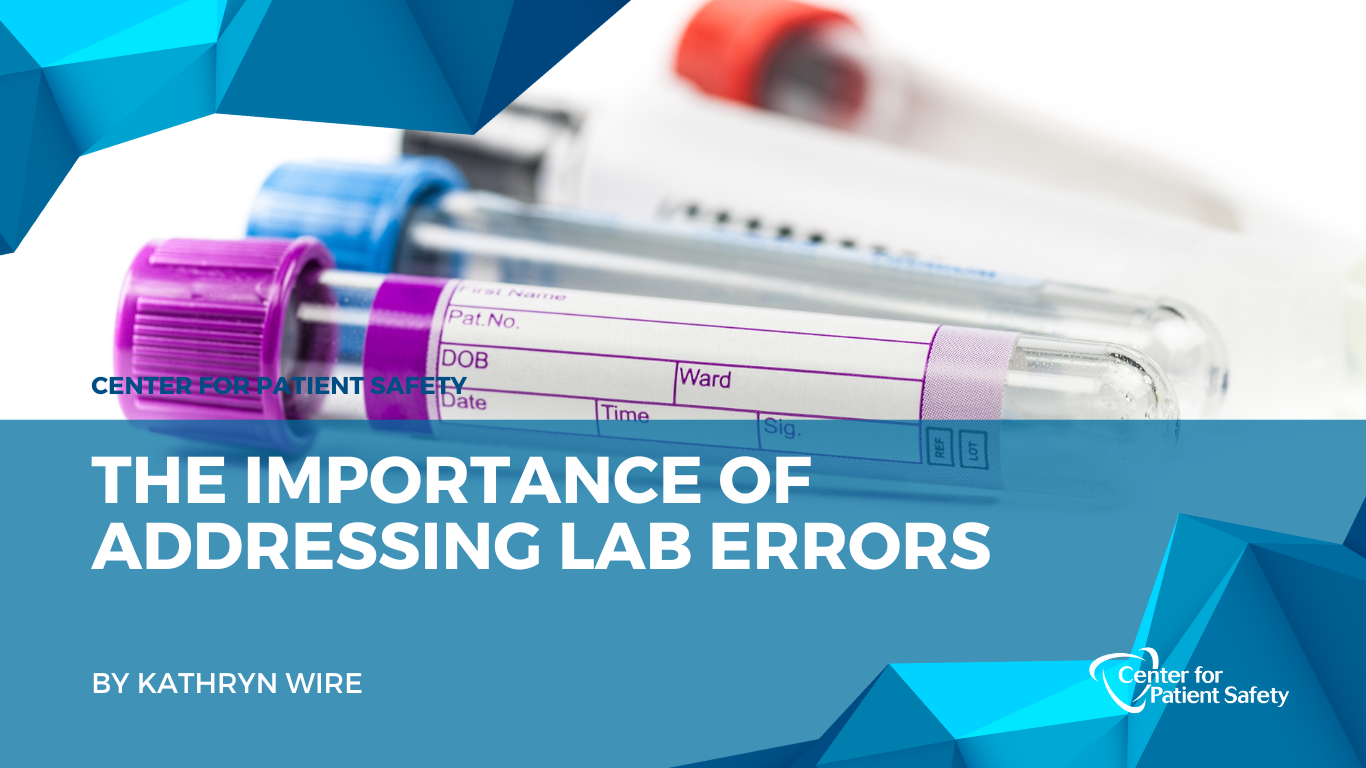The Importance of Addressing Lab Errors: Uncovering the Causes of Mislabeled and Unlabeled Specimens

In the past 18 months, the Center for Patient Safety PSO collected nearly 500 reports of unlabeled or mislabeled lab specimens from more than two dozen PSO participants. Research suggests more than 160,000 specimen-related adverse patient events occur annually, suggesting these remain largely underreported errors. Contributing factors include the sheer number of specimens collected and transported and the largely manual process of specimen collection.
While most reports to the CPS PSO did not reflect severe patient outcomes, we know these events can lead to confusion, errors, and delays in diagnosis and treatment, as well as additional cost.
Healthcare professionals rely on accurate test results to make informed decisions about patient care. Improperly labeled or prepared specimens delay diagnosis and treatment, potentially compromising patient care. Studies indicate, for example, that each hour of delay in treating an infection can exponentially increase the odds of death. Labeling issues can also lead to erroneous test results, leading providers astray. Mislabeled specimens can lead to "wrong patient" errors, precursors to incorrect treatments and unnecessary procedures. Studies show that an irretrievably lost specimen may cost up to $548, mislabeled specimens with redraw cost an estimated $712 per error. While these numbers may seem small, their total numbers, based on the large volume of specimens handled by a hospital annually, can be as high as $1 million for a large hospital.
Pediatric blood draws seem especially challenging. Small children's limited total blood volume can prevent redraws of a mislabeled or lost specimen. The consequences of such mistakes can be severe or potentially life-threatening for the child and create unnecessary stress for parents.
ACTION
Review your event reporting system for specimen-related reports. Whether or not serious injury resulted, study each report to identify the failure point(s) in your process.
Things to consider as you review events (or practices as part of a forward-looking review):
- The most frequently reported root causes of mislabeling errors are human error, inadequate training, and lack of standardized protocols. Not surprisingly, there can be significant overlap among those three.
- Distractions and interruptions also play a role as healthcare professionals work in fast-paced environments with multiple demands on their attention. Additionally, fatigue and lack of proper training can contribute to mislabeling or failing to label specimens accurately.
- Technological solutions can create barriers to mistakes, improving testing accuracy. For example, a barcode scanning system can backstop human action and confirm the identity of the patient and the nature of the test and required specimen.
- Develop and enforce protocols that minimize the risk of human error, such as the requirement for two patient identifiers.
- Minimize hurdles in the process that can interrupt staff members as they discern the need for collection (what does the order say?), gather the necessary equipment (what tubes will I need?), collect the specimen (correct ID and note any limitations?), and label the specimen for the laboratory (do I have the right patient's label for this specimen?). Improved safety results from smoother processes and fewer steps.
- Standardize processes for moving specimens to the laboratory. Loss or delay can lead to patient harm.
- Train staff correctly and audit for correct training and practice. When an incorrect procedure occurs, supervisors or peers should be comfortable calling it out and redirecting the individual involved to the proper actions. Students of just culture work will recognize the question: What normally happens? Did the person involved know the procedure, and was it possible to follow it?
- Automated systems should be subject to periodic checks for reliability.
If mislabeling, misidentification, delay, or loss occurs, establish a pathway to review the event. For example, the discovery of an unlabeled or mislabeled specimen should trigger the notification of the relevant personnel to reduce delays and mitigate potential patient harm. Staff should report the event along with any actions taken to address the issue. Only by looking at the universe of specimen occurrences can an organization understand the challenges presented by its procedures.
PROTOCOL DEVELOPMENT AND TRAINING. Make sure all stakeholders, including laboratory, IT, and any transport personnel, are represented in the planning process. Employees should participate in regular and thorough training to know how to label and correctly collect specimens. They must understand the process so that they can be held accountable for it. The responsibility for designing the system belongs to the organization; it's not enough to just extort employees "to do it right." With a sound system and comprehensive training, employees can develop a strong sense of responsibility for testing integrity, ultimately enhancing patient safety and the overall quality of healthcare services.
.png)